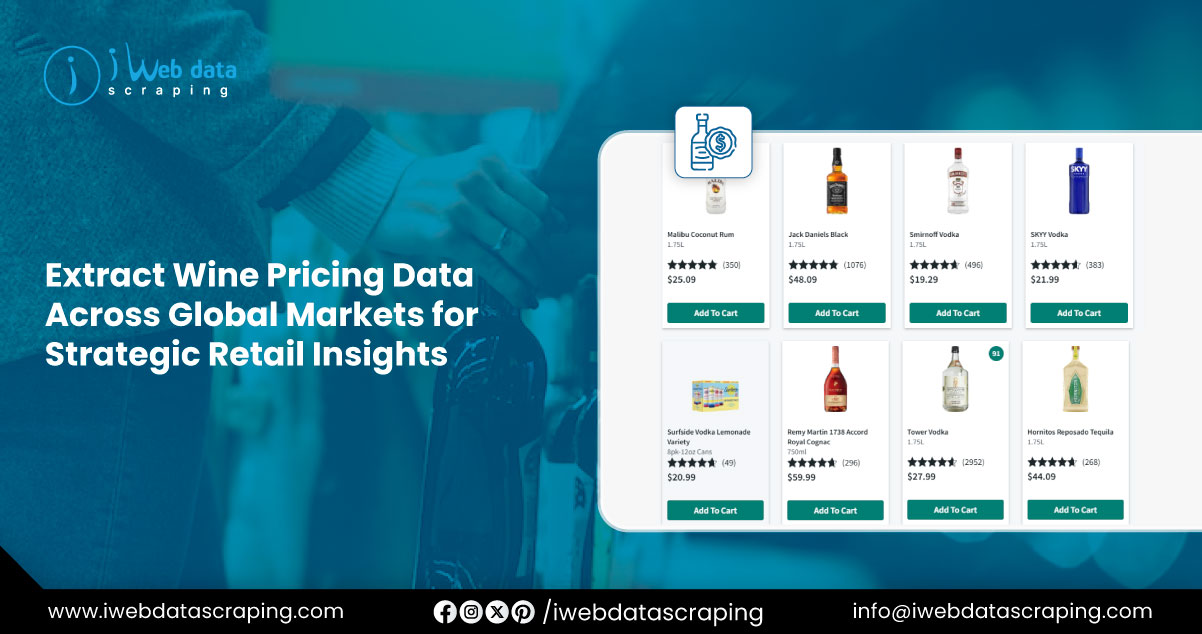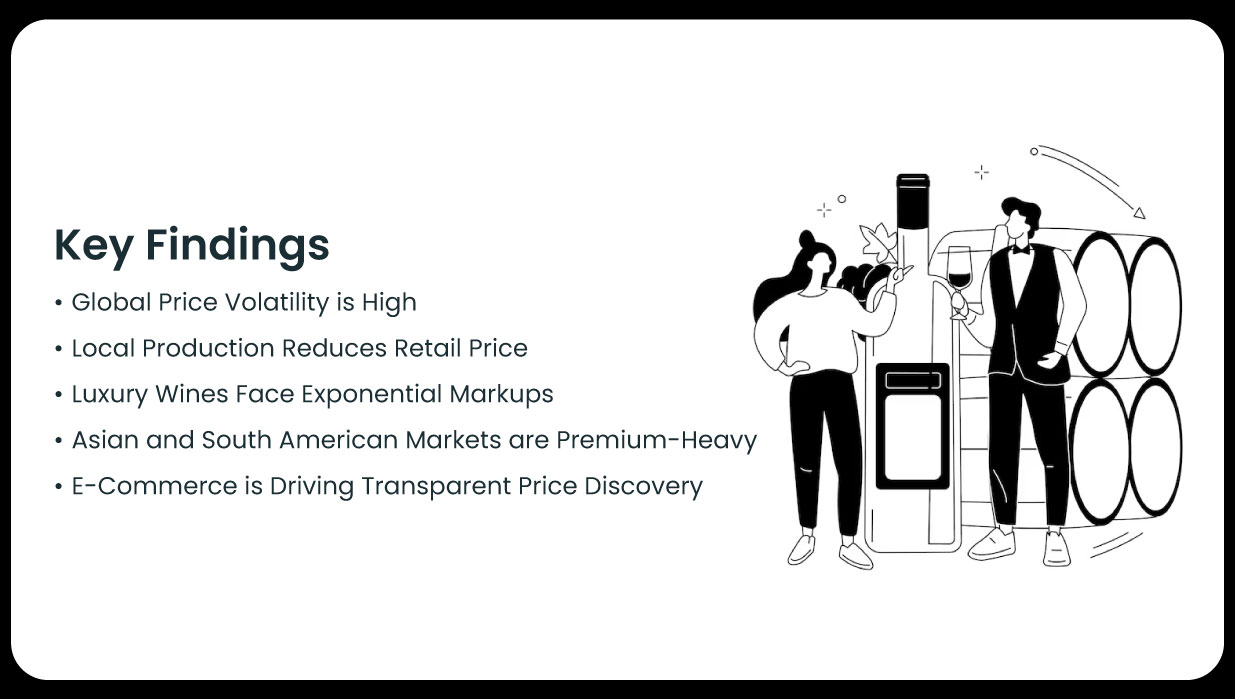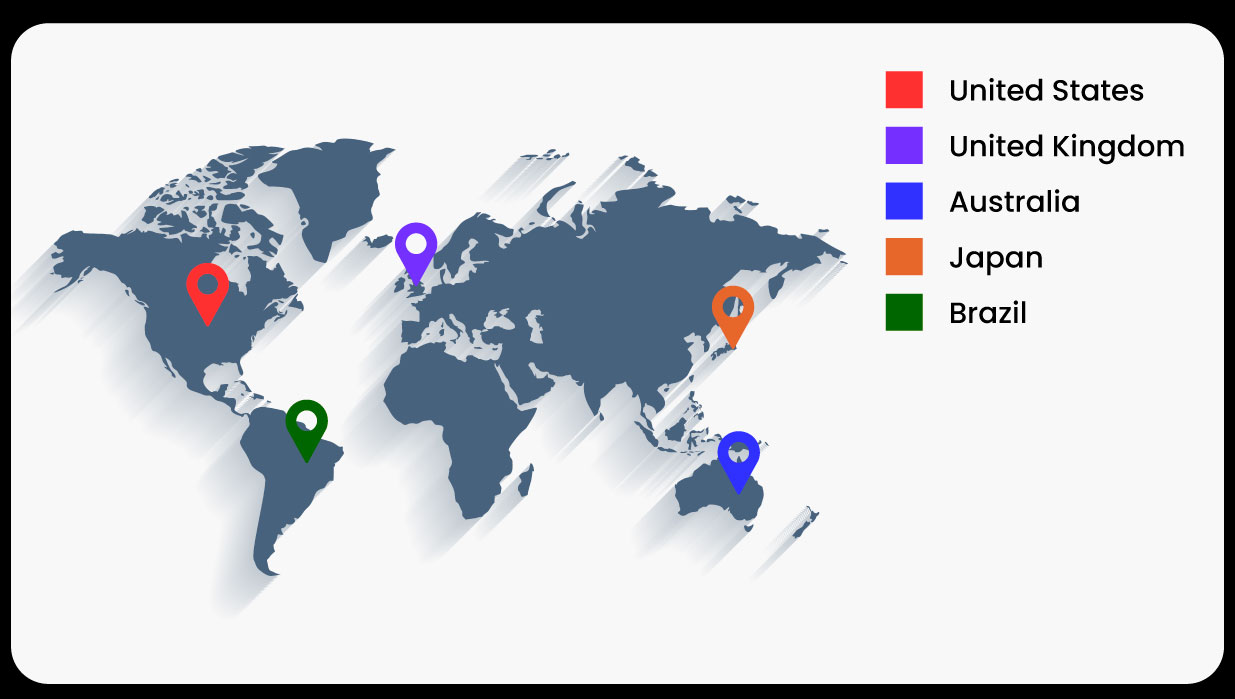

In a world where wine is both a luxury and a staple across cultures, the importance of pricing data in understanding consumer behavior and market performance is undeniable. Whether it's a fine Bordeaux or a New World Shiraz, global wine prices vary significantly depending on geography, regulation, and retail strategy. To remain competitive, many businesses are now turning to methods that Extract Wine Pricing Data Across Global Markets for strategic insights and benchmarking. By leveraging an International Wine Market Price Data Scraper, retailers, importers, and analysts gain access to large-scale, structured information about global wine pricing trends.
With the rise of e-commerce and global wine trade, there's an urgent need for scalable tools that enable Web Scraping Wine Price Data from Global Retailers. These tools empower industry stakeholders with a clearer understanding of local pricing variations, retail margins, and consumer affordability on a global scale. This report presents a comparative pricing study and synthesizes key findings from wine data collected across major markets in 2025.
A range of market forces, including local taxation, trade tariffs, domestic production strength, and consumer purchasing power, influence wine prices. Below is a comparative overview of average pricing in USD per 750ml bottle across 10 key countries:
| Country | Red Wine (Avg. USD) | White Wine (Avg. USD) |
|---|---|---|
| United States | $18.75 | $17.60 |
| United Kingdom | $15.20 | $14.30 |
| France | $12.90 | $11.75 |
| Germany | $13.10 | $12.00 |
| Australia | $10.50 | $10.20 |
| Japan | $24.60 | $23.50 |
| China | $21.40 | $19.90 |
| Brazil | $22.30 | $20.75 |
| South Africa | $9.80 | $8.90 |
| Canada | $19.50 | $18.10 |
The data clearly shows that consumers in Japan and Brazil pay some of the highest prices for wine. Meanwhile, countries like South Africa and Australia offer more affordable options, particularly for domestically produced wines. These disparities support the need for Scraping Wine Price Trends Worldwide for Market Analysis to inform decision-making and optimize pricing models for different markets.
To offer a more brand-specific view, we examined five international wine brands and tracked their prices across five countries.
| Wine Brand | USA | UK | Japan | Australia | Brazil |
|---|---|---|---|---|---|
| Penfolds Bin 28 Shiraz | $29.50 | $32.10 | $45.20 | $24.40 | $51.80 |
| Chateau Margaux 2018 | $780.00 | $820.00 | $1,050.00 | $740.00 | $1,200.00 |
| Cloudy Bay Sauvignon Blanc | $31.80 | $29.90 | $40.70 | $27.30 | $43.60 |
| Robert Mondavi Cabernet | $26.70 | $25.50 | $37.20 | $22.10 | $41.00 |
| Torres Sangre de Toro | $14.30 | $13.90 | $20.40 | $11.00 | $22.50 |
This table highlights a critical insight: luxury wines such as Chateau Margaux see the highest markup in non-producing countries, suggesting a strong correlation between import status and final retail price. These variances confirm the importance of Wine Pricing Data Extraction from Global Retailers for brands looking to maintain competitive pricing globally.

Through this multi-market wine pricing analysis, several significant findings emerge:
1. Global Price Volatility is High
Pricing for identical SKUs varies dramatically. For example, Penfolds Bin 28 Shiraz is priced at $24.40 in Australia but over $50 in Brazil. Such large gaps in pricing highlight opportunities for cross-border pricing strategies and arbitrage.
2. Local Production Reduces Retail Price
Countries with strong domestic wine industries (e.g., France, South Africa, Australia) consistently have the lowest average wine prices. This reinforces the economic efficiency of localized production and suggests why domestic consumption remains high in these markets.
3. Luxury Wines Face Exponential Markups
Premium wines experience markups of 30–70% in international markets. This makes them ideal candidates for pricing intelligence initiatives that Extract Wine Product Prices Across Countries, especially for importers targeting high-end consumers.
4. Asian and South American Markets are Premium-Heavy
Japan, China, and Brazil rank among the top in wine retail prices, suggesting these markets perceive wine more as a luxury good than a daily beverage. This presents opportunities for premium branding and positioning.
5. E-Commerce is Driving Transparent Price Discovery
As more wine purchases shift online, web-based pricing becomes easier to monitor and compare. Retailers need real-time visibility to adjust their listings competitively and attract informed consumers. Liquor and Alcohol Price Datasets are increasingly being adopted by online marketplaces to fine-tune their product strategies.

United States
Price variability is high due to state-level taxes and distribution laws. Retailers in states like California enjoy lower prices compared to those in New York.
United Kingdom
With a mature wine-import ecosystem, UK prices remain relatively stable. Brexit has added complexity in imports, but efficient port access mitigates major cost increases.
Australia
As a producer country, wine is highly affordable. However, export prices remain competitive due to lower local taxes and government incentives.
Japan
High-end wines dominate the shelves. Strict import regulations and consumer preference for prestige labels drive up pricing.
Brazil
Alcohol is heavily taxed, leading to some of the highest prices globally. Online purchases of wine are rising, but logistics and duties remain challenging for volume discounts.
Global wine pricing data presents more than just numbers; it tells a story of consumption, regulation, and economic shifts. By continuously monitoring these changes through structured scraping tools, wine sellers and brands can uncover insights into emerging demand centers, promotional gaps, and competitive pricing corridors.
Brands with international ambitions can use such data to:
As wine markets become increasingly globalized and digital-first, real-time pricing intelligence is essential for staying competitive. Businesses that invest in scalable solutions such as Alcohol Price Data Scraping Services position themselves to act swiftly on market changes and build a data-driven pricing advantage.
Furthermore, geographic context is key to sales optimization. Retailers looking to expand physical footprints must Scrape Alcohol and liquor Stores Location data to determine areas with high demand but low supply. This complements product-level pricing data and creates a powerful analytics framework for strategic growth.
Ultimately, a Liquor Shops Product Data Scraper serves not just as a technical tool but as a gateway to smarter retailing, cross-border optimization, and deeper consumer understanding. With global competition tightening, those who act on granular, market-specific wine pricing insights will lead the future of wine commerce.
Experience top-notch web scraping service and mobile app scraping solutions with iWeb Data Scraping. Our skilled team excels in extracting various data sets, including retail store locations and beyond. Connect with us today to learn how our customized services can address your unique project needs, delivering the highest efficiency and dependability for all your data requirements.
We start by signing a Non-Disclosure Agreement (NDA) to protect your ideas.
Our team will analyze your needs to understand what you want.
You'll get a clear and detailed project outline showing how we'll work together.
We'll take care of the project, allowing you to focus on growing your business.